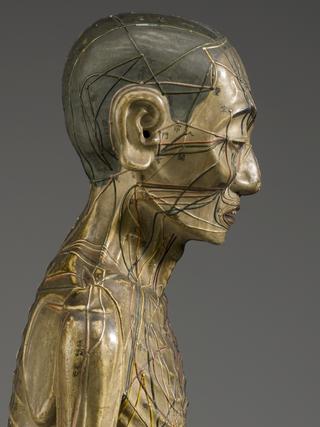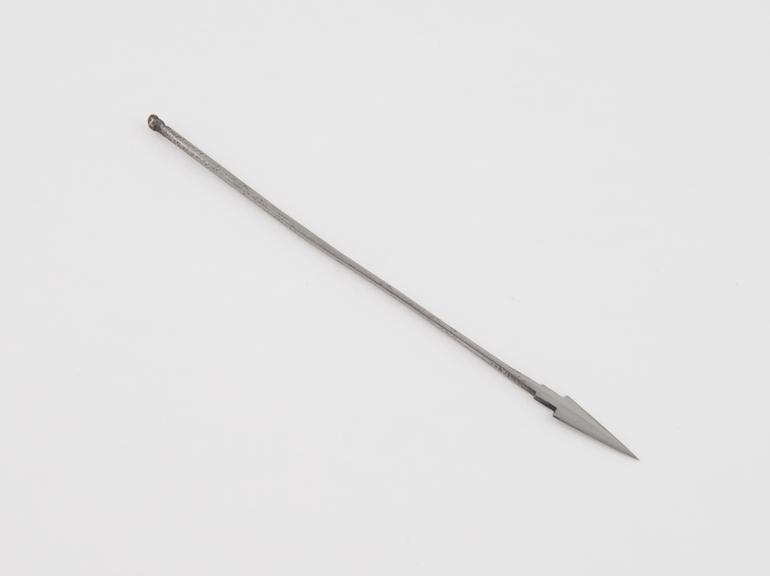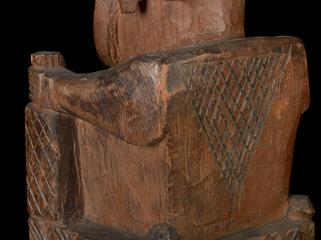




Acupuncture needle, steel
In Traditional Chinese Medicine (TCM), acupuncture needles are inserted into certain points on the skin. This unblocks the flow through the body of a life force known as qi (chi). TCM practitioners believe qi is essential to wellbeing. This Chinese example, seen second from right, has a coiled handle. This is a unique feature of Chinese needles. The coiled handle aids insertion. It is used in a technique called ‘scratching’. A fingernail is run up and down the coiled brass handle during this treatment. This sends vibrations into the acupuncture point. This example has a distinct twist at the piecing end. It may have been used during a technique called rotation. Rotation is when the needle is rolled between finger and thumb to stimulate the acupoint.
Details
- Category:
- Asian Medicine
- Collection:
- Sir Henry Wellcome's Museum Collection
- Object Number:
- A643649
- Materials:
- complete and steel (metal)
- Measurements:
-
overall: 115 mm .005kg
- type:
- acupuncture needle




